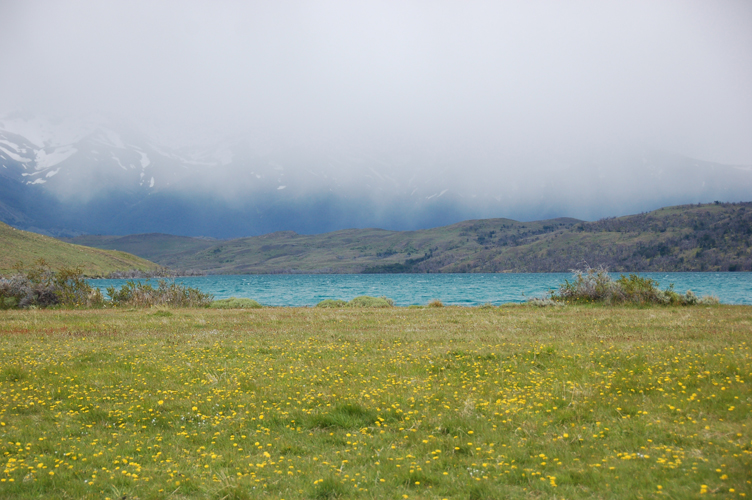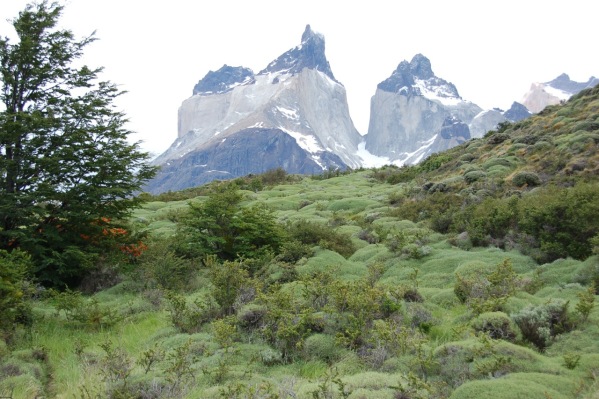Entries in Erwan Le Corre (4)
SUNDAY PALEO / April 22, 2012
 Sunday, April 22, 2012 at 12:02AM
Sunday, April 22, 2012 at 12:02AM  Everyday should be Earth day. Patagonia.
Everyday should be Earth day. Patagonia.
FITNESS
Backwoods Workouts With the World’s Fittest Man
"Erwan Le Corre doesn’t care for treadmills or pumping iron. He gave up karate long ago and lost interest in playing soccer. Nor does yoga, yin to the yang of the weight room, hold much appeal for the 40-year-old Frenchman. Yet Le Corre is built like a track star and can climb a tree as quickly as cat. He is also is adept at carrying logs, tossing rocks, scaling cliffs, slogging through mud pits and wrestling." - Smithsonian.com
MODERN DISEASES
Daily Soda Consumption Increases Stroke Risk
"In the study, men and women who consumed one or more sugar-sweetened sodas per day were 16 percent more likely to have a stroke over a 20- to 30-year period, compared with those who drank no soda." - MyHealthNewsDaily Staff
Omega-3 Polyunsaturated Fatty Acids: Mechanisms and Clinical: n-3 PUFAs; The Potential for Atherosclerotic Plaque Stability
"The n-3 PUFAs have been shown to exert a range of anti-inflammatory actions, he said, which include decreased production of arachidonic acid-derived prostaglandins and leukotrienes, decreased production of inflammatory cytokines, decreased expression of adhesion molecules and decreased expression of degrading proteinases that can erode plaque caps." - Medscape
NUTRITION
Eat Like A Caveman: Nutrition Lessons From The Paleolithic Era
"Paleo diet–approved foods are high in soluble fiber, antioxidants, phytochemicals, omega-3 and monounsaturated fats and low-glycemic carbohydrates—the kind of nutrients that allowed our ancestors to have strong, lean and active bodies." - Wellness Times
Teach Kids to Read “High Fructose Corn Syrup” in Ingredient Lists
"So off to the candy aisle we went. We walked out of the store with a bottle of Mellow Yellow because it was cheap and the print was bigger. In case you don’t know what that is – I certainly didn’t – it’s a lemon soda that contains nothing but poisonous substances. If you try this experiment at home, whatever you do, don’t open that bottle!" - The Primal Parent
PALEO RECIPES
- Paleo Shrimp and Whitefish Ceviche, A Chilled Snack with Ginger
- Two Minute Tuna Salad
- Sweet BBQ Baby Back Ribs (and instructions for a DIY wood-fired grill)
TRANSPORTATION
In the market for an electric car? Check out the new Ford Focus here and here. Or, maybe you want to wait for the Sora electric motorcycle by Lito Green Motion; video here.
URBAN FARMING
Urban farming is reaching a new level. Not only are communities, such as Boise, increasingly embracing the concept, its benefits beyond food, such as in Green Gotham, are also increasingly being recognized. Now Michigan is proposing a “100-acre, $100-million urban-farming research center in Detroit” and Colorado State University is hiring its “first urban agriculture extension agent.”
Find a brief survey of urban farming in cities throughout the world here. Some people are even being salaried for their efforts.
FROM THE ARCHIVE

SUNDAY PALEO / March 4, 2012
 Sunday, March 4, 2012 at 12:53AM
Sunday, March 4, 2012 at 12:53AM ANTHROPOLOGY
Here’s some interesting archeological news: hunter-gathers built groups of “long-term dwellings” in the Middle East 10,000 years before farming. Science News reports that “mobile hunter-gatherers” living 20,000 years ago “hunkered down for months at a time in spots that featured rivers, lakes and plentiful game.”
Discoveries in and around hut remnants at a Stone Age site called Kharaneh IV include hearths, animal bones and caches of pierced seashells and other apparently ritual items.
Furthermore, archaeologist Lisa Maher:
“… expects evidence of additional four- to five-person huts will turn up at the site, which is about the size of four U.S. football fields.”
Since the first grinding stones did not appear until around 15,000 years ago, grains were not the reason these Paleolithic ancestors were able derive enough food from the nearby land to allowed them to stay put. I suspect, in addition to the plentiful game suggested by the researchers, improved hunting and fishing technology allowed these larger groupings to develop.
 Chesapeak Bay. Image: NASAWhile the dwellings described above were being built in the Middle East (give or take a few thousand years), other Paleolithic ancestors may have been making their way to North America. Not from Siberia, but from Iberia! Acccording to anthropologist Dennis Stanford, they settled in what is now Virginia. A hunting blade found near mastodon bones is among the evidence being uncovered. Brian Vastag, of The Washington Post National, writes:
Chesapeak Bay. Image: NASAWhile the dwellings described above were being built in the Middle East (give or take a few thousand years), other Paleolithic ancestors may have been making their way to North America. Not from Siberia, but from Iberia! Acccording to anthropologist Dennis Stanford, they settled in what is now Virginia. A hunting blade found near mastodon bones is among the evidence being uncovered. Brian Vastag, of The Washington Post National, writes:
A mastodon relic found near the mouth of the Chesapeake Bay turned out to be 22,000 years old, suggesting that the blade was just as ancient. Whoever fashioned that blade was not supposed to be here.
According to our current understanding, the first Paleo Americans arrived from Asia by crossing Beringia to reach Alaska. However, some archeologists and anthropologist suspect that:
… mysterious Stone Age European people known as the Solutreans paddled along an ice cap jutting into the North Atlantic. They lived like Inuits, harvesting seals and seabirds.
FITNESS
There is little argument that our Paleolithic ancestors were fitter than we are. Just imagine searching for food almost daily, maintaining a fire, porting water, and repairing your shelter. Actually, using modern hunter-gatheres as a guide, our Paleolithic ancestors did all this and still had more leisure time than we do. It was their lifestyle that kept them fit: natural exercise and rest, though certainly not on a fixed schedule.
Lance C. Dalleck, Ph.D., a specialist in cardiac rehabilitation at the University of Auckland in New Zealand, calls it their “‘activity pattern’” way of life”. In A Paleolihic Program for the 21st Century, he recommends replicating their “activity pattern” as a means of avoiding disease:
Some have suggested that replicating the activity patterns of indigenous humans—to the extent that this is possible and practically achievable in today’s society—could be an effective way to reduce the incidence of these diseases. This article examines this premise and offers practical recommendations for exercise frequency, intensity, duration and mode for realigning our daily physical activities with the classic levels expected within our unchanged Paleolithic genome.
Dalleck breaks down the hunter-gatherer’s fitness “activity pattern” into four aspects: Daily Physical Activity, Primitive Resistance Training, Interval Training, and Comprehensive Periodization. He also list modern activities that can be used to meet these goals.
If you are pursuing natural fitness in the natural world, consider the work of the leading Paleolithic movement specialist, Erwan Le Corre of MovNat. Le Corre breaks down “evolutionary fitness” into three physical activities: locomotive skills, manipulative skills, and combative skills. In The Evolutionary Foundation of Naturalness, Le Corre describes his approach and also provides a great graphic on the activities used to develop these skills.
While Le Corre’s approach is usually performed in the natural environment, Mark Sisson's plan may be done with limited equipment at a nearby park or at home. The program focuses on 5 movements:
Humans have been squatting, horizontal pressing, vertical pressing, climbing, and using their torsos to resist pushing and pulling forces for millions of years.
(We, Homo sapiens spapiens, are about 200,000 years old.)
These authors are not keen on what happens in a gym. However, I find that one can perform many of these physical activities, or their rough equivalents, in a regular gym. In the winter, while some brave frigid weather to exercise outdoors, I take to the gym, wear FiveFingers, and do a combination of “natural” and traditional exercises.
OK. You’ve done your fitness activities and are developing an “activity pattern” lifestyle. Now, it’s time to cook. An Internet search will lead you to many of the Paleo cookbooks now available, or, you can try the Paleo recipes below.
PALEO RECIPES
Erwan Le Corre of MovNat trains in the wild
 Wednesday, February 15, 2012 at 07:55PM
Wednesday, February 15, 2012 at 07:55PM Alerady fit? I mean really fit? Take a look at how Erwan Le Corre of MovNat maintains fitness through natural movement in the natural world.
 Erwan Le Corre,
Erwan Le Corre,  MovNat in
MovNat in  Fitness
Fitness 
